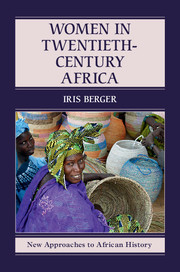Book contents
- Frontmatter
- Dedication
- Contents
- LIST OF ILLUSTRATIONS
- LIST OF MAPS
- PREFACE
- Map
- Introduction
- 1 Colonizing African families
- 2 Confrontation and adaptation
- 3 Domesticity and modernization
- 4 Mothers of nationalism
- 5 The struggle continues
- 6 “Messengers of a new design”: marriage, family, and sexuality
- 7 Women's rights: the second decolonization?
- 8 Empowerment and inequality in a new global age
- Contradictions and challenges
- REFERENCES AND FURTHER READING
- INDEX
8 - Empowerment and inequality in a new global age
Published online by Cambridge University Press: 05 May 2016
- Frontmatter
- Dedication
- Contents
- LIST OF ILLUSTRATIONS
- LIST OF MAPS
- PREFACE
- Map
- Introduction
- 1 Colonizing African families
- 2 Confrontation and adaptation
- 3 Domesticity and modernization
- 4 Mothers of nationalism
- 5 The struggle continues
- 6 “Messengers of a new design”: marriage, family, and sexuality
- 7 Women's rights: the second decolonization?
- 8 Empowerment and inequality in a new global age
- Contradictions and challenges
- REFERENCES AND FURTHER READING
- INDEX
Summary
Dramatic increases in the number of women educated through secondary school and university provided the backdrop for women's political advances in the late twentieth century. Their education notwithstanding, these women still confronted the pressures that Tsitsi Dangarembga explored in her novel Nervous Conditions, set in colonial Zimbabwe. Prompted by her uncle's questioning about how much schooling she should have before she thought about marrying “a decent man” and setting up “a decent home,” the main character, Tambudzai, reflected,
Marriage. I had nothing against it in principle. In an abstract way I thought it was a very good idea. But it was irritating the way it always cropped up in one form or another, stretching its tentacles back to bind me before I had even begun to think about it seriously, threatening to disrupt my life before I could even call it my own.
Educating girls and women
Across postcolonial Africa, girls continued to confront similar pressures of balancing their desire for education with social pressures to marry, often at an early age. Nonetheless, by the 1990s, revolutionary changes in education had swept across the continent. Between 1970 and 2009, sub-Saharan Africa was one of the two world regions with the most dramatic gains in girls’ education at the primary level, with gender parity reached in ten countries in east and southern Africa. On the secondary level, boys continued to outnumber girls, although the difference was not substantial. Overall, as of 2006, 21 percent of girls attended secondary school, as compared with 26 percent of boys. Nonetheless, on the worldwide list of ten countries with the strongest gender imbalance, nine were African. Matching global trends, African women were the main beneficiaries of a dramatic expansion in tertiary education. Enrollment figures for 2006 were twenty-four times higher than in 1970, with women outnumbering men in Namibia, Botswana, and Lesotho.
These transformative increases in schooling also helped to fuel the contradictions of the 1990s, which extended not only to the contrast between catastrophic wars and dramatic political transformations, but also to the growing gap between rich and poor. At a time when intensive global contacts and the increased number of educated women helped to fuel the growth of a larger middle class, more and more women sunk into poverty.
- Type
- Chapter
- Information
- Women in Twentieth-Century Africa , pp. 176 - 198Publisher: Cambridge University PressPrint publication year: 2016



